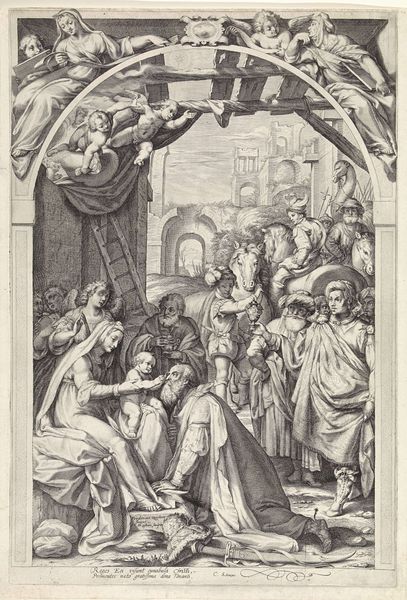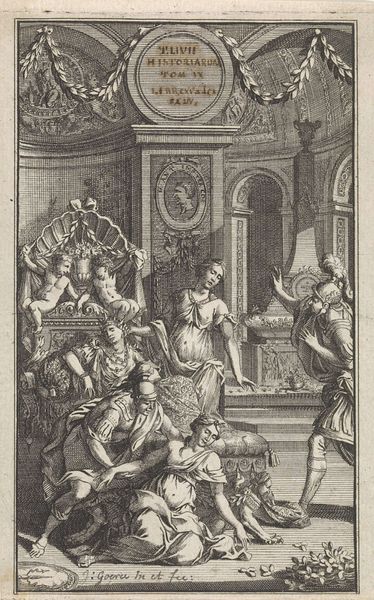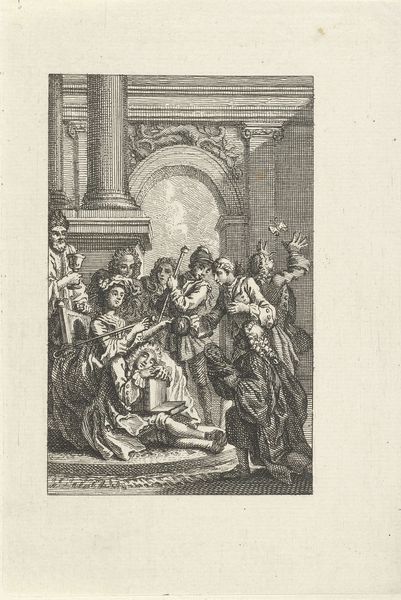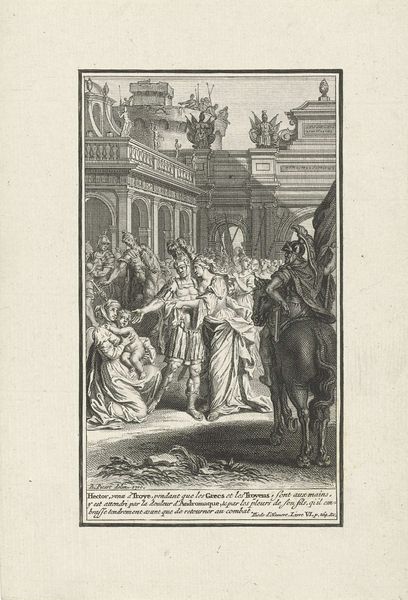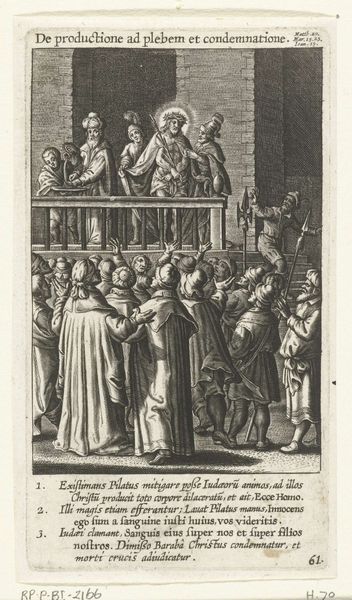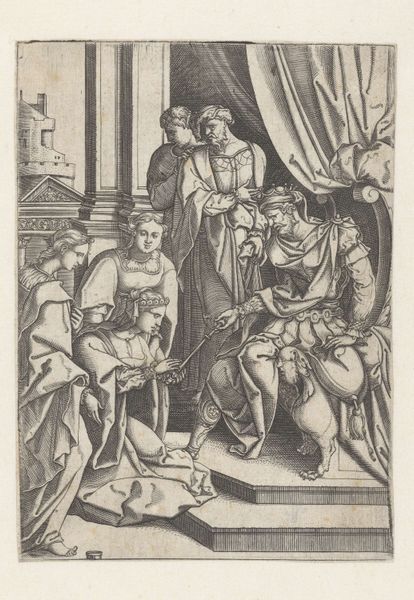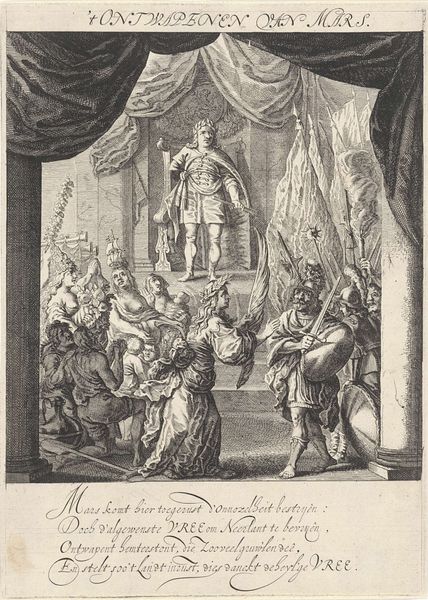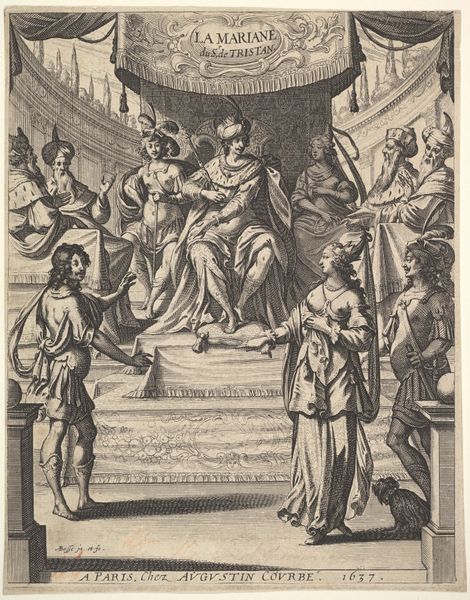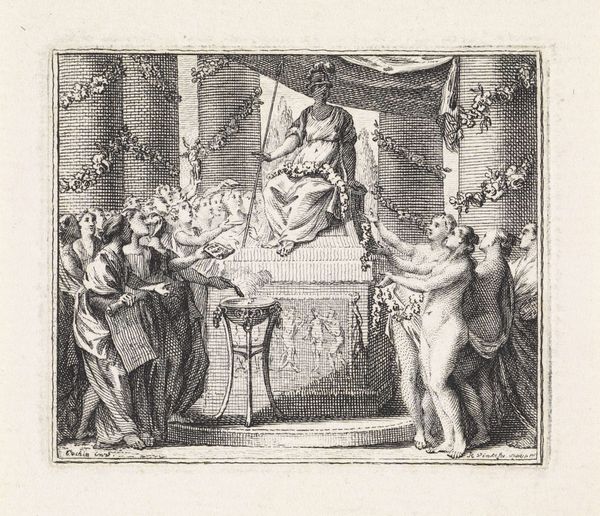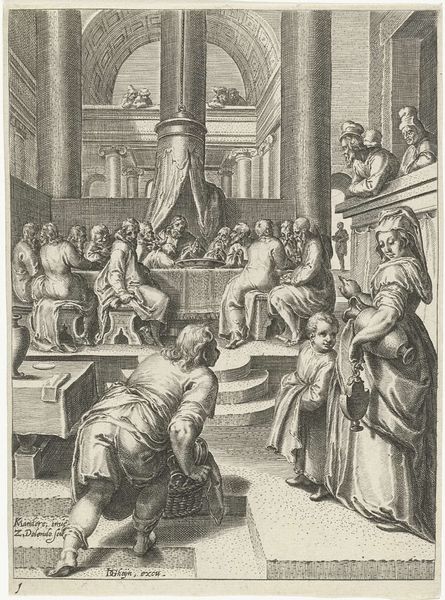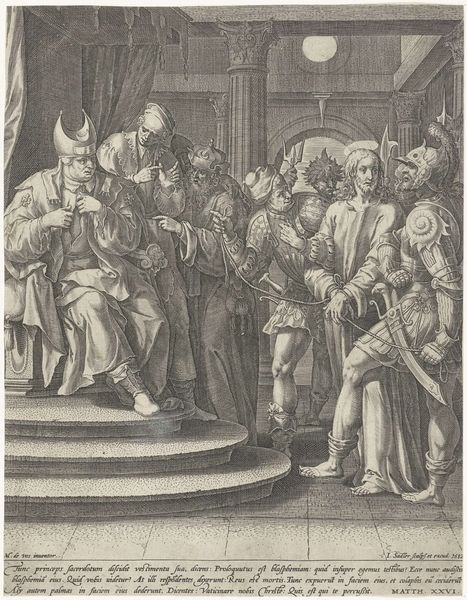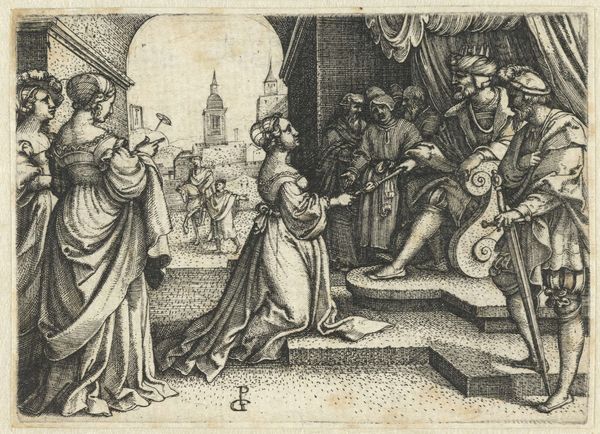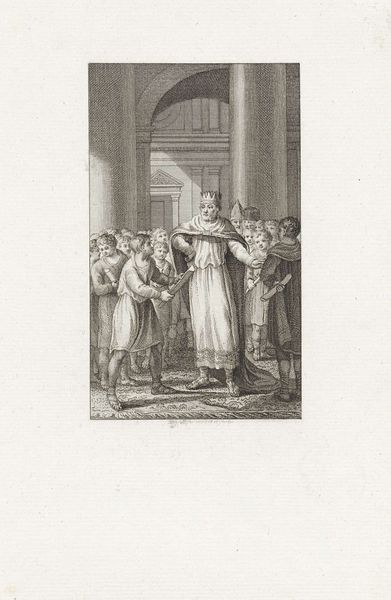
print, engraving
#
narrative-art
#
baroque
# print
#
old engraving style
#
figuration
#
history-painting
#
engraving
Dimensions: height 139 mm, width 86 mm
Copyright: Rijks Museum: Open Domain
Curator: Pieter Tanjé, a Dutch engraver, created this scene in 1743 called “Koningin Atalja ter dood veroordeeld," which translates to "Queen Athalia Condemned to Death.” It’s currently housed at the Rijksmuseum. The technique...it has this delicate baroque feel. What jumps out at you? Editor: Immediately, the tension. It feels like a freeze-frame from a play, doesn’t it? A queen in peril. The swirling drapery, the anguished faces—it’s operatic. Melodrama! Curator: Absolutely, operatic is spot on! That centralized figure, almost frozen mid-gesture. The details are impressive too, it's incredible how they get so much life from tiny lines and shading in engraving work. And look at the figures packed into that space—every face telling its own micro-story of shock or outrage. The symbolism intrigues me – is it as straightforward as good versus evil here? Editor: I see that theatrical tension, yes, but the arrangement of bodies isn’t chaotic. It funnels our gaze right up to that tiny figure on the throne, this child king Joash being protected. Everything and everyone literally and figuratively pointing to the power transition. Consider the sword being used by one in power to sentence another - it all builds into an overarching symbolism for dynastic succession, which leads back to continuity over time as dynasties rise and fall... Curator: Good point. What fascinates me is how the artist renders emotional complexity using limited tonal range. But perhaps it's precisely in that limitation that the power lies. What's missing lets our imaginations fill the space. Do you think Tanjé achieved what he aimed for? Editor: Oh, I think so! The very constraints of the medium push the symbolism and emotional narrative to the forefront. I came into it thinking just an exciting opera snippet, I'm now looking at the much deeper question about legacy. Curator: Exactly! It gives us the essence of this historical scene. Such drama within these static, black lines - a slice of 18th-century Dutch narrative at its best!
Comments
No comments
Be the first to comment and join the conversation on the ultimate creative platform.

